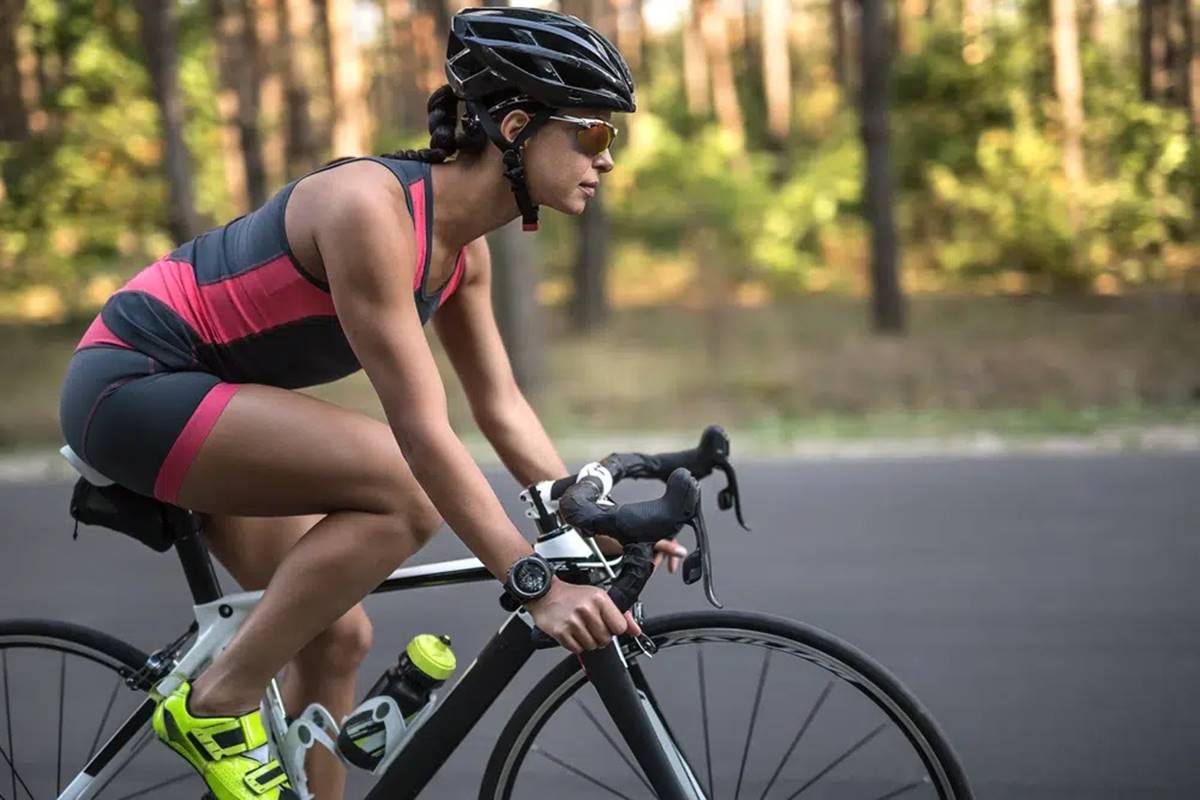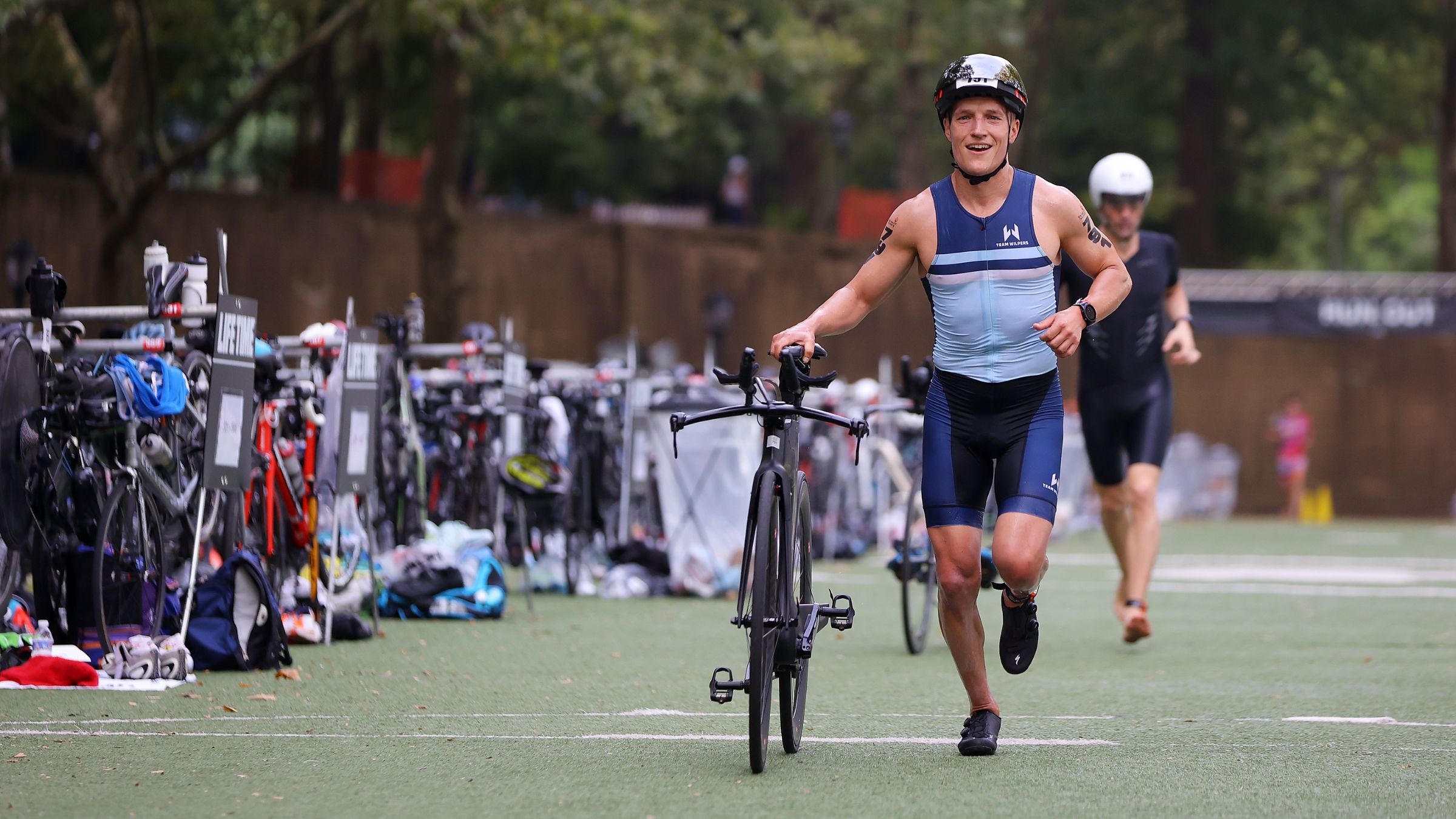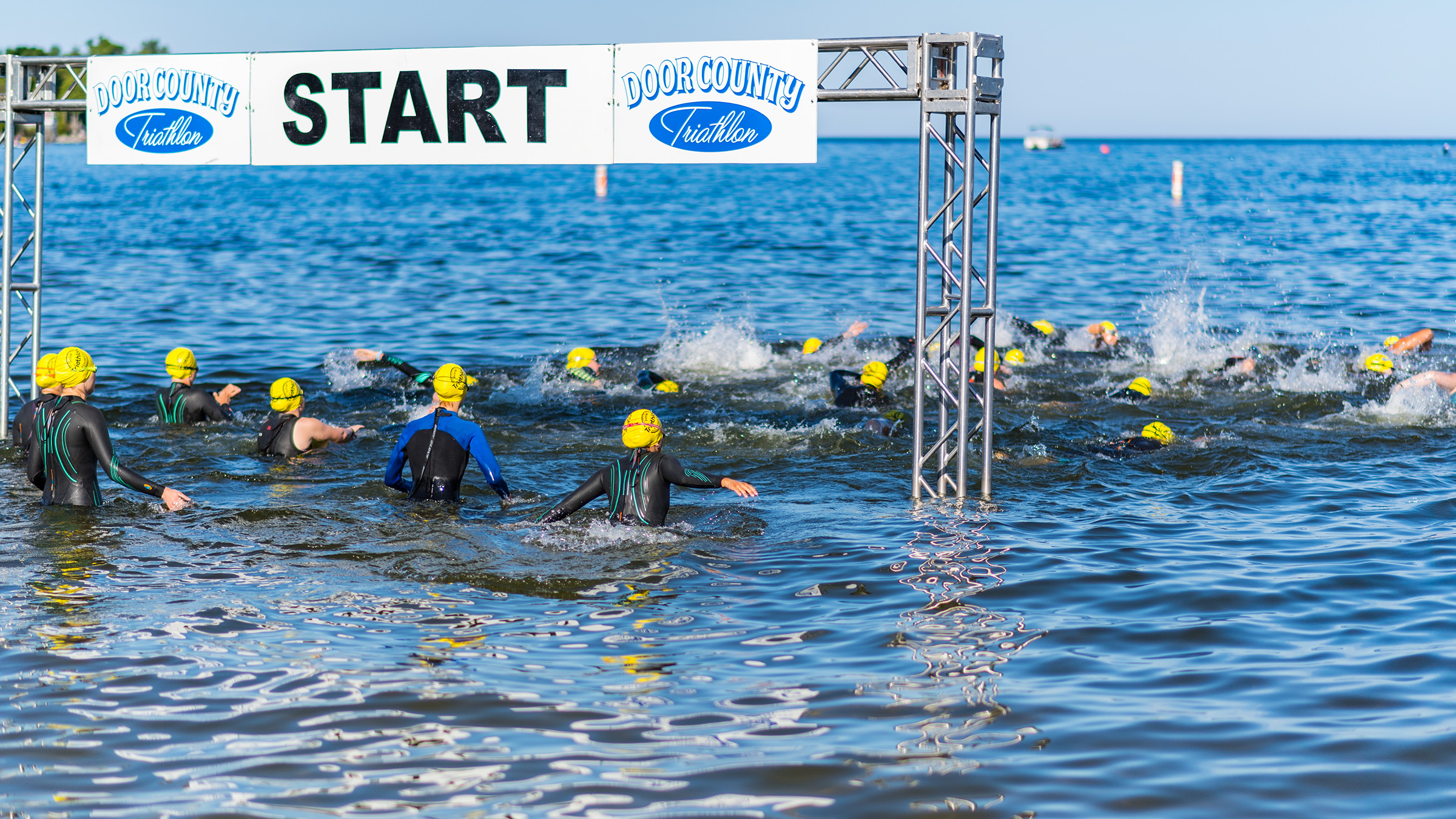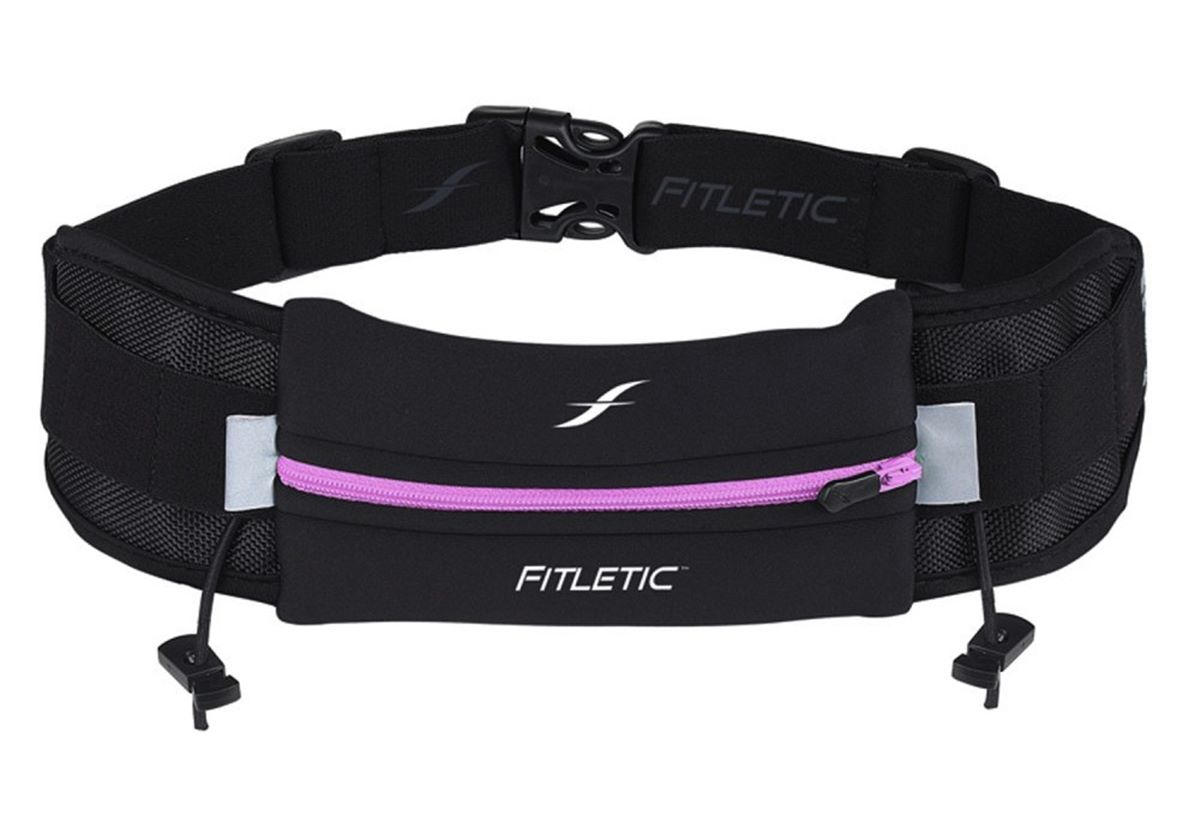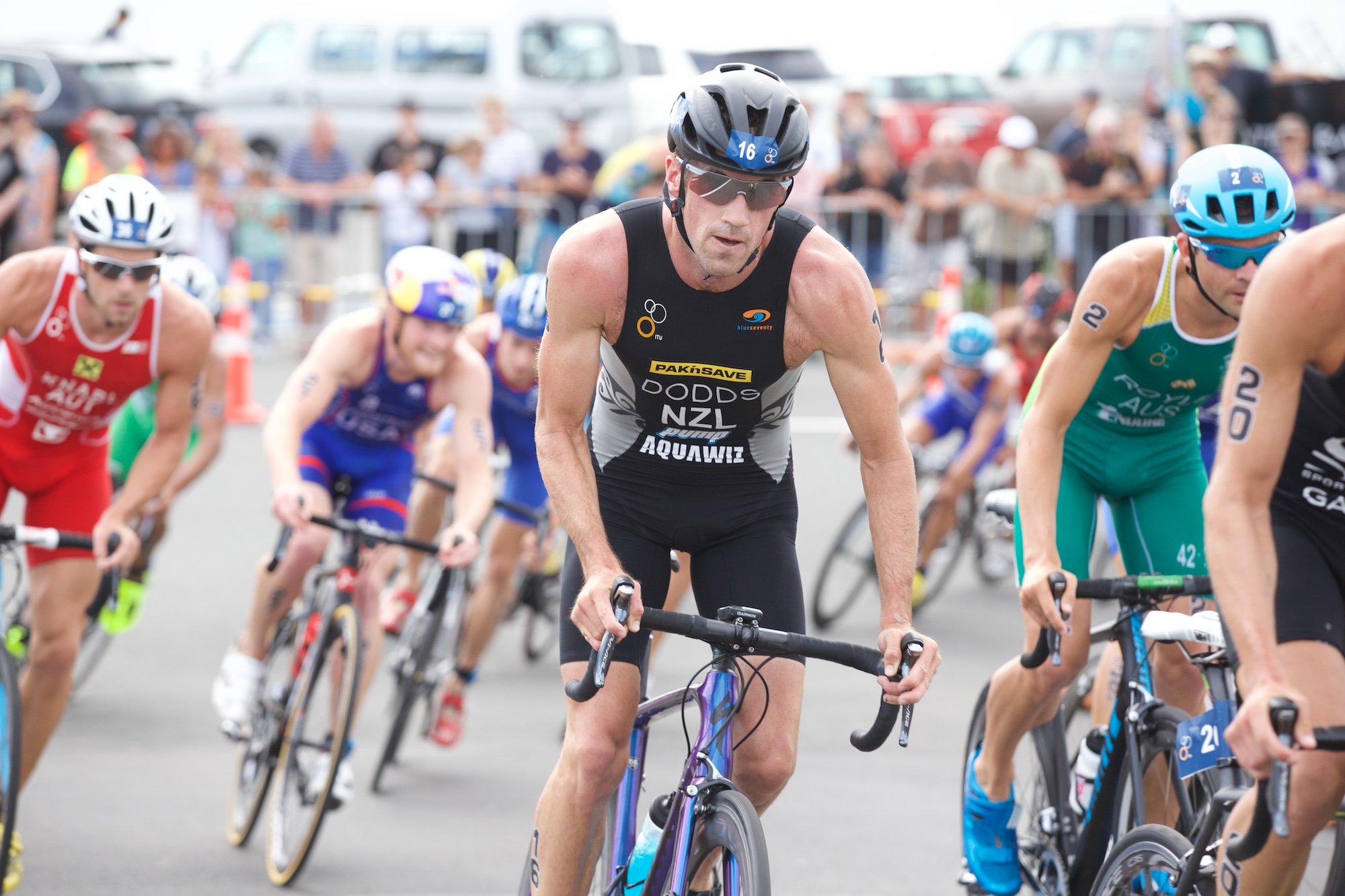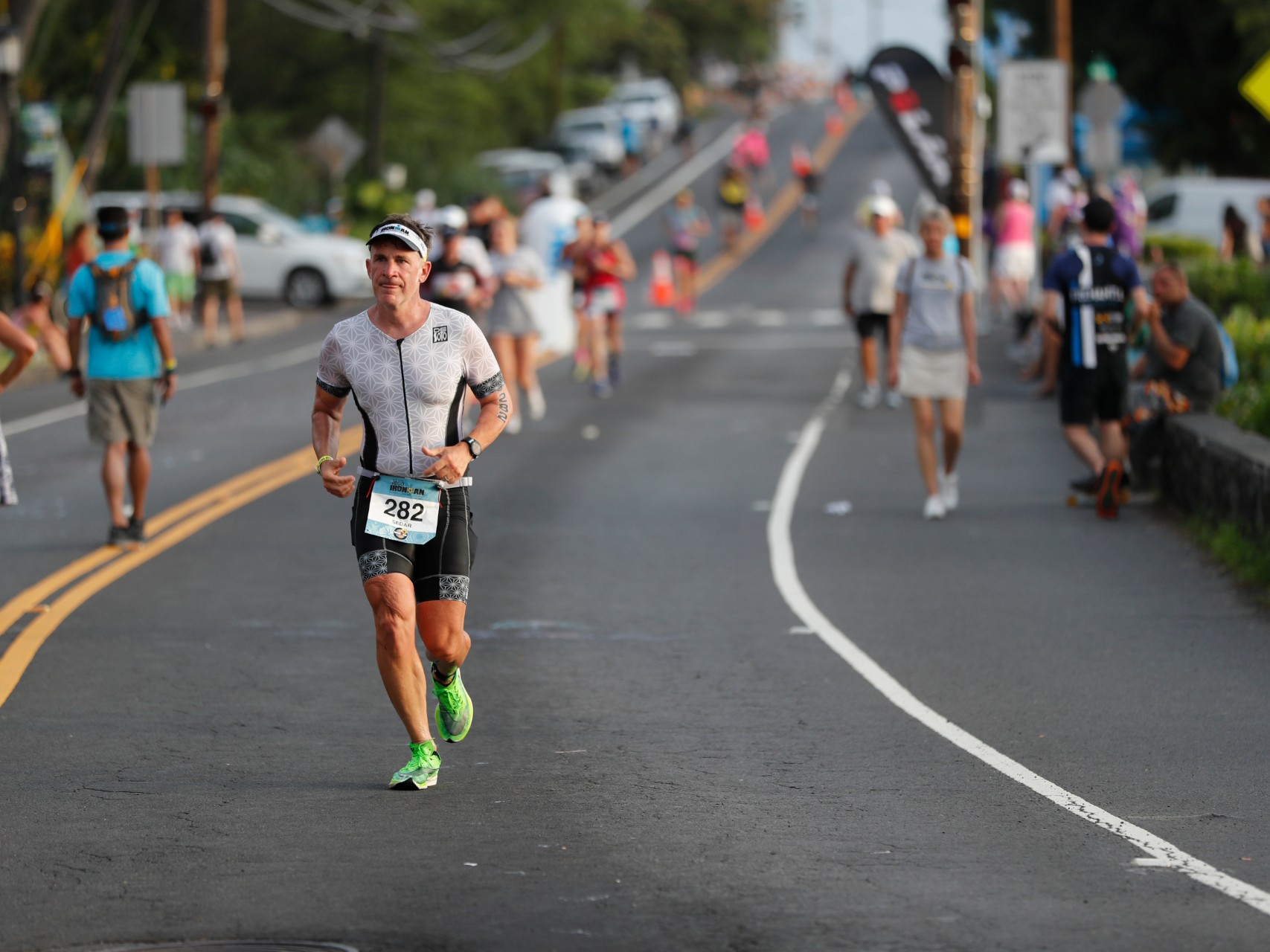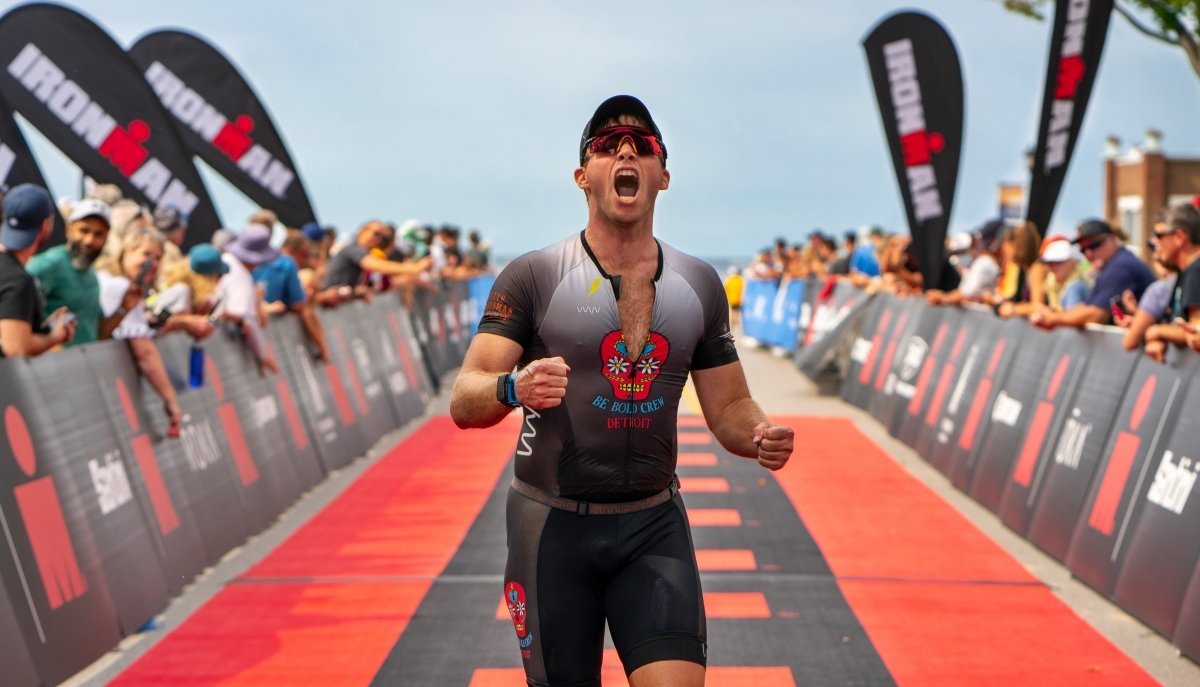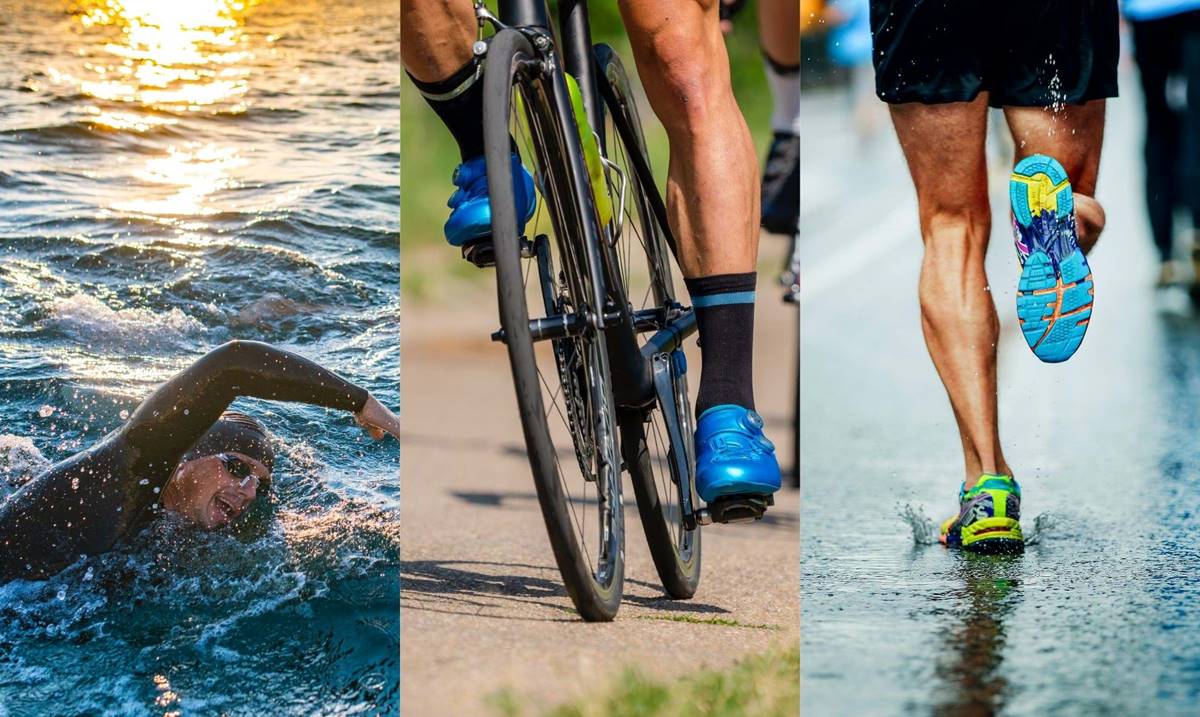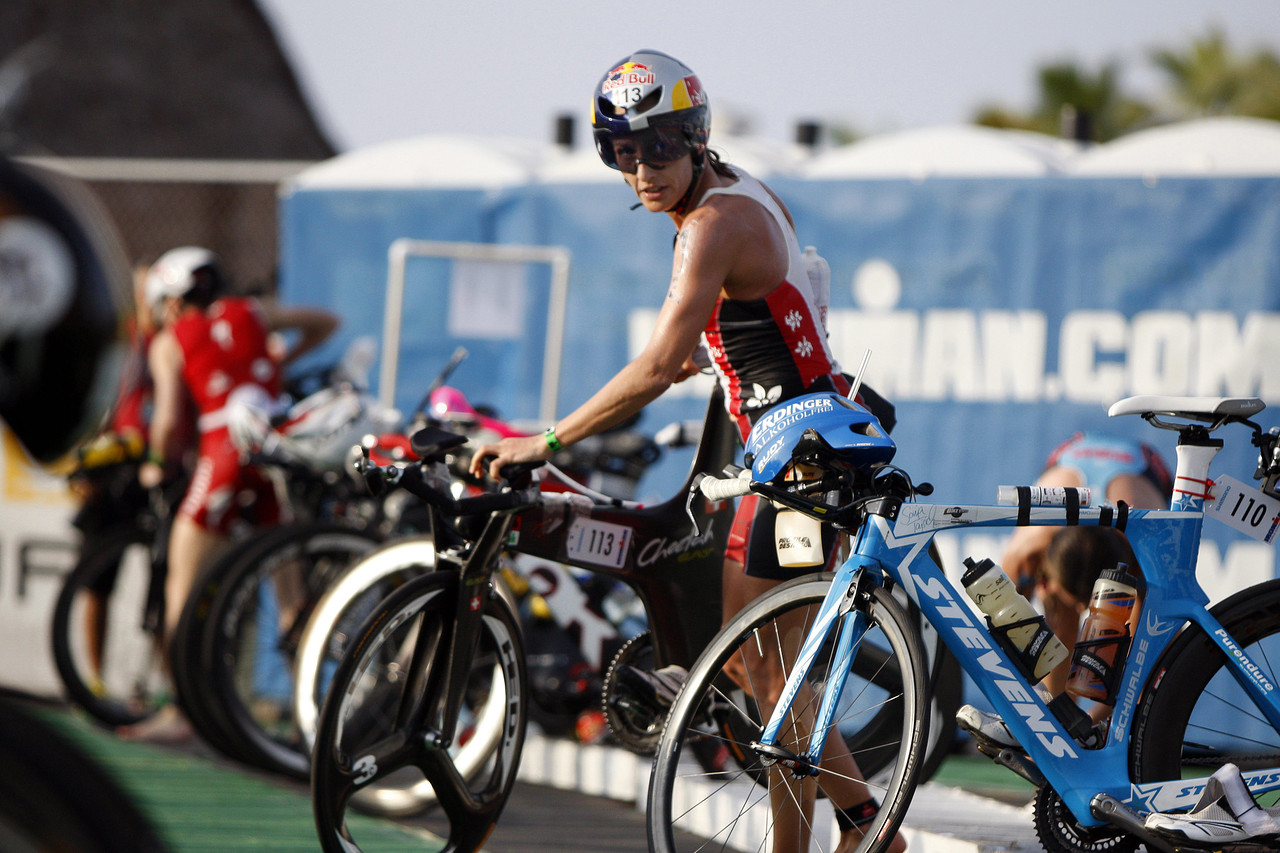

Featured
What Do I Need For A Triathlon
Modified: January 2, 2024
Discover the essentials you need for a triathlon with our featured guide. Get tips on gear, training, nutrition, and more to ensure a successful race.
Introduction
Are you ready to take on the ultimate physical and mental challenge? Participating in a triathlon is an incredible achievement that pushes your limits and tests your endurance. Whether you’re a seasoned athlete or a newbie to the world of multi-sport racing, it’s important to have the right gear and equipment to ensure a successful and enjoyable experience.
A triathlon consists of three disciplines: swimming, cycling, and running. Each discipline requires its own set of equipment, and while you may already have some of the basics, there are specific items designed specifically for triathlon events that can enhance your performance and keep you comfortable throughout the race.
Before diving into the specific gear and equipment needed for each discipline, it’s important to note that triathlon can be an expensive sport to get into. However, keep in mind that you don’t need to invest in the top-of-the-line gear when you’re just starting out. As you become more experienced and committed, you can always upgrade your equipment.
Now, let’s explore the essential gear and equipment needed for each discipline in a triathlon, along with tips on how to choose the right ones for your needs.
Training Equipment
Before you dive into the world of triathlon, it’s crucial to have the right training equipment to help you prepare for the challenges ahead. While the actual race requires specific gear, your training sessions are equally important for building strength, endurance, and technique.
Here are a few key training equipment items that every triathlete should have:
- Swim goggles: A good pair of swim goggles is essential to protect your eyes and ensure clear vision while swimming. Look for goggles that fit well and offer anti-fog and UV protection.
- Swim cap: Wearing a swim cap can help reduce drag in the water and keep your hair out of your face. Look for a snug-fitting cap made of durable materials.
- Swim fins: Swim fins are a valuable training tool for improving leg strength and technique in the water. They can help you build power in your kick and enhance your overall swimming performance.
- Bike trainer: When weather conditions aren’t favorable for outdoor cycling, a bike trainer allows you to continue your training indoors. It provides a stable platform for your bike and allows you to simulate outdoor riding conditions.
- Running shoes: A good pair of running shoes is crucial to prevent injuries and provide optimal support and cushioning during your training runs. Invest in a pair that suits your running style and foot shape.
- Heart rate monitor: Monitoring your heart rate during training can help you gauge your effort levels and avoid overexertion. Choose a reliable heart rate monitor that offers accurate readings and suits your preferences.
- Triathlon watch: A triathlon watch is a multifunctional device that tracks your time, distance, pace, and more across all three disciplines. It’s a convenient tool for monitoring your progress and analyzing your training data.
Remember, while having the right training equipment is important, consistency, proper technique, and gradually increasing your training volume are key to successful triathlon preparation. Prioritize quality workouts and listen to your body to avoid overtraining and reduce the risk of injury.
Swim Gear
Swimming is typically the first discipline in a triathlon, and having the right swim gear is crucial for efficiency and comfort in the water. Here are some essential swim gear items to consider:
- Swimsuit or wetsuit: Depending on the water temperature and race regulations, you may need either a swimsuit or a wetsuit. A swimsuit should be comfortable and provide freedom of movement. If you opt for a wetsuit, choose one that fits well and allows for unrestricted arm and shoulder movement.
- Swim cap: As mentioned earlier, a swim cap is essential to reduce drag and keep hair out of your face. Silicone caps are more durable, while latex caps offer a snug fit.
- Swim goggles: To protect your eyes and maintain visibility in the water, invest in a reliable pair of swim goggles. Look for ones with anti-fog coating and UV protection.
- Earplugs and nose clips: If you’re prone to ear infections or want to keep water out of your ears, consider using earplugs. Nose clips can help prevent water from entering your nose and can be beneficial for new swimmers.
- Swim paddles: Swim paddles are training aids that attach to your hands and increase resistance in the water. They help improve upper body strength and technique.
- Pull buoy: A pull buoy is a flotation device placed between your legs to isolate your upper body during swim training. It helps improve arm and shoulder strength and encourages a proper body position in the water.
- Kickboard: A kickboard is a flotation device that allows you to focus solely on improving your kick technique. It provides buoyancy and helps isolate your legs during training.
- Swim fins: Swim fins are not only useful for training but can also come in handy during open water swims to provide an extra boost of speed. Look for fins that fit well and offer flexibility.
Remember to properly maintain and care for your swim gear to ensure longevity. Rinse your goggles, cap, and wetsuit with fresh water after each use, and store them in a cool, dry place.
Next up, let’s dive into the gear needed for the cycling discipline!
Bike Gear
Cycling is a significant portion of any triathlon, and having the right bike gear can greatly impact your performance and overall experience. Here are some essential bike gear items to consider:
- Bicycle: The most important piece of bike gear is, of course, your bicycle. Choose a bike that suits your riding preferences and the terrain of the race. Road bikes are commonly used in triathlons due to their lightweight and aerodynamic design.
- Bike helmet: Safety should always be a priority, and wearing a properly fitting bike helmet is a must when cycling. Look for a helmet that meets safety standards and provides good ventilation.
- Cycling shoes and pedals: Cycling shoes that clip into your pedals are an excellent investment for improved power transfer and efficiency. Look for shoes that are comfortable and compatible with your bike’s pedal system.
- Cycling shorts: Padded cycling shorts provide comfort during long rides by reducing friction and minimizing chafing. Look for shorts made from moisture-wicking materials to keep you dry and comfortable.
- Cycling jersey: A cycling jersey is designed to be form-fitting and aerodynamic, allowing for optimal movement and breathability. Look for jerseys with rear pockets to store nutrition and other small essentials.
- Cycling gloves: Cycling gloves provide grip, cushioning, and protection for your hands during long rides. Look for gloves with gel padding and breathable materials.
- Bike pump and spare tubes: It’s essential to carry a bike pump and spare tubes in case of flat tires during training or a race. Familiarize yourself with how to change a bike tube to avoid unnecessary delays.
- Bike computer: A bike computer can track valuable information such as speed, distance, time, and cadence. It’s an excellent tool for monitoring your performance and progress during training rides.
- Water bottle and cage: Staying hydrated while cycling is essential. Invest in a reliable water bottle and bottle cage to mount on your bike frame for easy access during rides.
- Bike tools and maintenance kit: It’s wise to have a basic bike tool kit for minor repairs and adjustments. Include items like a multi-tool, tire levers, and chain lubricant for on-the-go maintenance.
Ensure that your bike is properly maintained and that all components are in good working condition. Regularly cleaning and lubricating your bike will extend its lifespan and enhance its performance.
Now that you’re geared up for cycling, let’s move on to the essential gear needed for the running discipline!
Run Gear
The final discipline in a triathlon is running, and having the right gear can make all the difference in your performance and comfort. Here are some essential run gear items to consider:
- Running shoes: A good pair of running shoes is crucial to prevent injuries and provide optimal support and cushioning during your runs. Look for shoes that suit your running style and foot shape.
- Socks: Invest in moisture-wicking socks to keep your feet dry and prevent blisters. Look for socks with cushioning in the key areas like the heel and ball of the foot.
- Running shorts or leggings: Choose running shorts or leggings that are comfortable and allow for freedom of movement. Look for moisture-wicking materials to keep you dry during your runs.
- Running top: Opt for a lightweight and breathable running top that wicks away sweat and allows for freedom of movement. Consider factors such as weather conditions and personal preference.
- Running hat or visor: Protect yourself from the sun and keep sweat out of your eyes with a running hat or visor. Look for one that provides good ventilation and a comfortable fit.
- GPS watch: A GPS watch is a valuable tool for tracking your distance, pace, and time during your runs. Look for a watch with features that suit your needs, such as heart rate monitoring and interval training options.
- Reflective gear: If you’re running in low-light conditions, it’s important to wear reflective gear to ensure visibility to drivers and other athletes. Consider wearing a reflective vest or adding reflective strips to your clothing.
- Hydration belt or handheld water bottle: Staying hydrated during your run is crucial. Consider using a hydration belt or a handheld water bottle to carry water or sports drinks with you.
- Running accessories: Depending on your preferences and needs, you may consider using accessories such as a running belt for storing nutrition or a foam roller for post-run recovery.
Remember to gradually break in your running shoes and clothing before race day to ensure they fit well and are comfortable. Additionally, prioritize proper hydration and fueling during your runs to perform at your best.
Now that you have the gear for swimming, cycling, and running, let’s move on to discussing clothing and accessories that can enhance your triathlon experience.
Clothing and Accessories
In addition to the specific gear for each discipline, there are clothing and accessories that can enhance your overall triathlon experience. Here are some essential clothing items and accessories to consider:
- Triathlon suit: A triathlon suit is an all-in-one piece of clothing that combines a swimsuit, cycling shorts, and a running top. It is designed to be quick-drying and comfortable for all three disciplines.
- Triathlon race belt: A race belt is a lightweight and adjustable belt that holds your race number. It allows you to easily transition between disciplines by wearing your number on your back for the bike and on your front for the run.
- Sunglasses: Protect your eyes from the sun, wind, and debris with a good pair of sunglasses. Look for ones that offer UV protection and fit securely on your face.
- Compression gear: Compression gear, such as compression socks or sleeves, can help improve circulation, reduce muscle fatigue, and enhance recovery. Consider wearing them during and after your training sessions.
- Headband or sweatband: Keep sweat away from your eyes and forehead with a headband or sweatband. It can be especially useful during hot and humid races or intense training sessions.
- Transition towel: Use a small towel on the transition area to keep your feet clean and dry while transitioning between disciplines. It can also be used for drying off after the swim portion.
- Race day bag: A race day bag is a handy accessory to carry all your gear and essentials to the race venue. Look for a bag with compartments and pockets to keep your items organized and easily accessible.
- Sports nutrition: Fueling your body properly during a triathlon is crucial. Pack nutrition such as energy gels, bars, electrolyte drinks, and snacks in your race day bag to keep yourself energized throughout the race.
- Sunscreen: Protect your skin from harmful UV rays by applying sunscreen before the race. Look for a sweat-resistant and water-resistant sunscreen with a high SPF.
- Recovery tools: After the race, prioritize recovery by using tools such as foam rollers, massage sticks, or compression boots. These tools can help with muscle recovery and reduce post-race soreness.
Remember that the clothing and accessories you choose should be comfortable, functional, and suited for the specific conditions of the race. Practice using and transitioning with these items during your training sessions to ensure a seamless race day experience.
Now, let’s move on to discussing nutrition and hydration strategies for your triathlon.
Nutrition and Hydration
Nutrition and hydration play a critical role in sustaining your energy levels and performance throughout a triathlon. Proper fueling and hydration strategies can help you avoid fatigue, cramping, and depletion. Here are some essential tips for nutrition and hydration:
- Pre-race meal: Prioritize a balanced meal rich in carbohydrates, moderate in protein, and low in fat a few hours before the race. This will provide you with the necessary energy without causing digestive discomfort.
- During the race: Depending on the length of the race, you’ll need to consume carbohydrates and electrolytes to keep your muscles fueled and hydrated. Energy gels, sports drinks, and electrolyte tablets are popular choices, but experiment during training to find what works best for you.
- Hydration: Drink water and electrolyte-rich fluids at regular intervals throughout the race. Dehydration can negatively impact your performance, so aim to drink small amounts consistently rather than waiting until you feel thirsty.
- Post-race recovery: After completing the triathlon, refuel your body with a combination of carbohydrates and protein to aid muscle recovery. This can include a balanced meal, a recovery drink, or a protein shake.
- Practice your nutrition plan: It’s essential to practice your nutrition and hydration plan during your training sessions to find what works best for your body. Everyone’s nutritional needs and tolerances can vary, so experiment and make adjustments accordingly.
- Listen to your body: Pay attention to your body’s signals during the race. If you start feeling lightheaded or fatigued, it may be a sign that you need to fuel up or hydrate more frequently.
- Avoid trying new foods or drinks on race day: Stick to the foods and drinks that you’ve tested and know work well with your body during training. Trying new products on race day can lead to unwanted digestive issues.
- Consider the race conditions: The race’s environmental conditions, such as temperature and humidity, can impact your hydration needs. Plan accordingly and adjust your fluid intake to match the conditions on race day.
- Recovery hydration: After the race, continue hydrating with water, electrolyte-rich fluids, and light snacks to replenish your body’s fluid and electrolyte levels.
- Consult a sports nutritionist: If you’re unsure about developing a nutrition and hydration plan, consider consulting with a sports nutritionist who can provide personalized guidance based on your specific needs and goals.
Remember, everyone’s nutritional needs and preferences are unique, so it’s crucial to find what works best for you through trial and error during training. Regularly practicing your nutrition and hydration plan will help you optimize your performance on race day.
Now, let’s move on to discussing the gear and equipment needed for the transitions between each discipline.
Transition Gear
Transitions are a crucial part of a triathlon, and having the right gear can help you save time and maintain efficiency during the race. Transition 1 (T1) is when you transition from the swim to the bike, while Transition 2 (T2) is when you transition from the bike to the run. Here are some essential gear items to consider for smoother transitions:
- Transition mat: A small mat or towel placed in your transition area can help mark your spot and keep your gear organized. It also provides a clean surface for you to step on when transitioning between disciplines.
- Plastic bag: Use a plastic bag to keep your wet swim gear separate from the rest of your gear in your transition backpack or bag.
- Elastic laces: Elastic laces for your running shoes eliminate the need for tying and untying your shoelaces during transitions. They allow for quick slip-on and secure fit.
- Number belt: A number belt is a convenient accessory that allows you to easily attach your race number to your waist during the run portion. It saves time compared to having to pin your number onto your shirt.
- Quick-release bike shoes: If you’re using clip-in pedals, consider using quick-release bike shoes. They allow you to easily slip out of the shoes when transitioning from biking to running.
- Socks: Decide whether you prefer to wear socks or run without them. Practice and see what works best for you during your training sessions.
- Sunscreen: Apply sunscreen during transition to ensure you’re protected from the sun during the bike and run portions.
- Water bottle: If needed, attach a water bottle to your bike for hydration during the cycling portion of the race.
- Extra nutrition: Have some extra nutrition, such as energy gels or bars, readily available in your transition area in case you need an extra boost of energy during the race.
- Extra clothing layers: Depending on the weather conditions, have some extra clothing layers available in your transition area in case you need to adjust your clothing during the race.
When it comes to transitions, practice is key. Set up a mock transition area during your training sessions to simulate the race environment and perfect your transition routine. Organize your gear in a way that is intuitive and allows for quick and efficient transitions between disciplines.
Now that you’re equipped with the necessary transition gear, let’s move on to discussing the importance of safety equipment during a triathlon.
Safety Equipment
Safety should always be a top priority during a triathlon. It’s essential to have the right safety equipment to protect yourself and ensure a smooth and secure race. Here are some essential safety equipment items to consider:
- Swim safety buoy: A swim safety buoy is a flotation device that you can attach to yourself during open water swims. It not only provides visibility to other swimmers and rescue personnel but also offers buoyancy and a sense of security.
- Bike helmet: We mentioned this earlier, but it’s worth reiterating. Wearing a properly fitting bike helmet is non-negotiable to protect your head from potential injuries during the cycling portion of the race.
- Reflective gear: Ensure you’re visible to drivers and other athletes by wearing reflective gear, especially if you’re participating in races that involve low-light conditions or early morning starts.
- First aid kit: It’s always a good idea to have a basic first aid kit in your transition area in case of minor scrapes or cuts. Include items such as adhesive bandages, antiseptic wipes, and blister treatments.
- Emergency contact information: Carry a small ID bracelet or have emergency contact information written on the inside of your race bib or on your wrist in case of any medical emergencies during the race.
- Cell phone: Keep a cell phone with you in a waterproof case or bag during the race for emergencies and to stay connected with race officials.
- Weather essentials: Be prepared for changing weather conditions by carrying essentials such as a rain jacket, sunscreen, and extra layers to protect yourself from extreme temperatures.
- Course familiarity: Familiarize yourself with the race course, including any potential hazards or challenging sections. Knowing the course in advance will help you navigate safely during the race.
- Training and experience: One of the most important safety factors is proper training and experience. Ensure that you have trained adequately in each discipline and have the necessary skills and confidence to complete the race safely.
- Awareness and communication: Stay aware of your surroundings and communicate with fellow athletes, especially during crowded spots like swim starts or bike drafts. Being mindful and respectful of others will contribute to a safer race environment for everyone.
Remember, safety is a collective responsibility. Be proactive in looking out for others as well and follow all the instructions and guidelines provided by the race officials.
Now that you have a comprehensive understanding of the gear and equipment needed for a triathlon, you’re well-prepared to embark on this exciting and challenging journey.
Conclusion
Preparing for a triathlon requires not only physical training but also having the right gear and equipment. By investing in the appropriate swim gear, bike gear, run gear, and transition gear, you can enhance your performance, comfort, and safety during the race.
Swim gear, such as goggles, caps, and swim fins, ensures clear vision and efficient movement through the water. Bike gear, including a well-fitted bicycle, helmet, and cycling shoes, facilitates speed and control on the bike course. Run gear, such as running shoes, socks, and clothing, promotes comfort and proper form during the run portion.
Transition gear, such as a transition mat, race belt, and elastic laces, allows for smooth and efficient transitions between disciplines. Safety equipment, such as a swim safety buoy, bike helmet, and reflective gear, ensures your well-being and visibility during the race. Additionally, nutrition and hydration strategies, along with the right clothing and accessories, play a vital role in maintaining optimal energy and performance throughout the triathlon.
Remember, each individual is unique, and it’s important to find the gear and equipment that work best for you through trial and adjustment during training. Additionally, practice your transition routines and familiarize yourself with the race course to optimize your performance and safety on race day.
Finally, always prioritize safety and be aware of your surroundings. Follow race guidelines, communicate with fellow athletes, and make sure you’re properly equipped with necessary safety gear and emergency contact information.
Now that you’re armed with the knowledge and understanding of the gear and equipment needed for a triathlon, it’s time to embark on this incredible journey. Train hard, stay focused, and enjoy the experience of pushing your limits and achieving your goals in this ultimate test of endurance.

